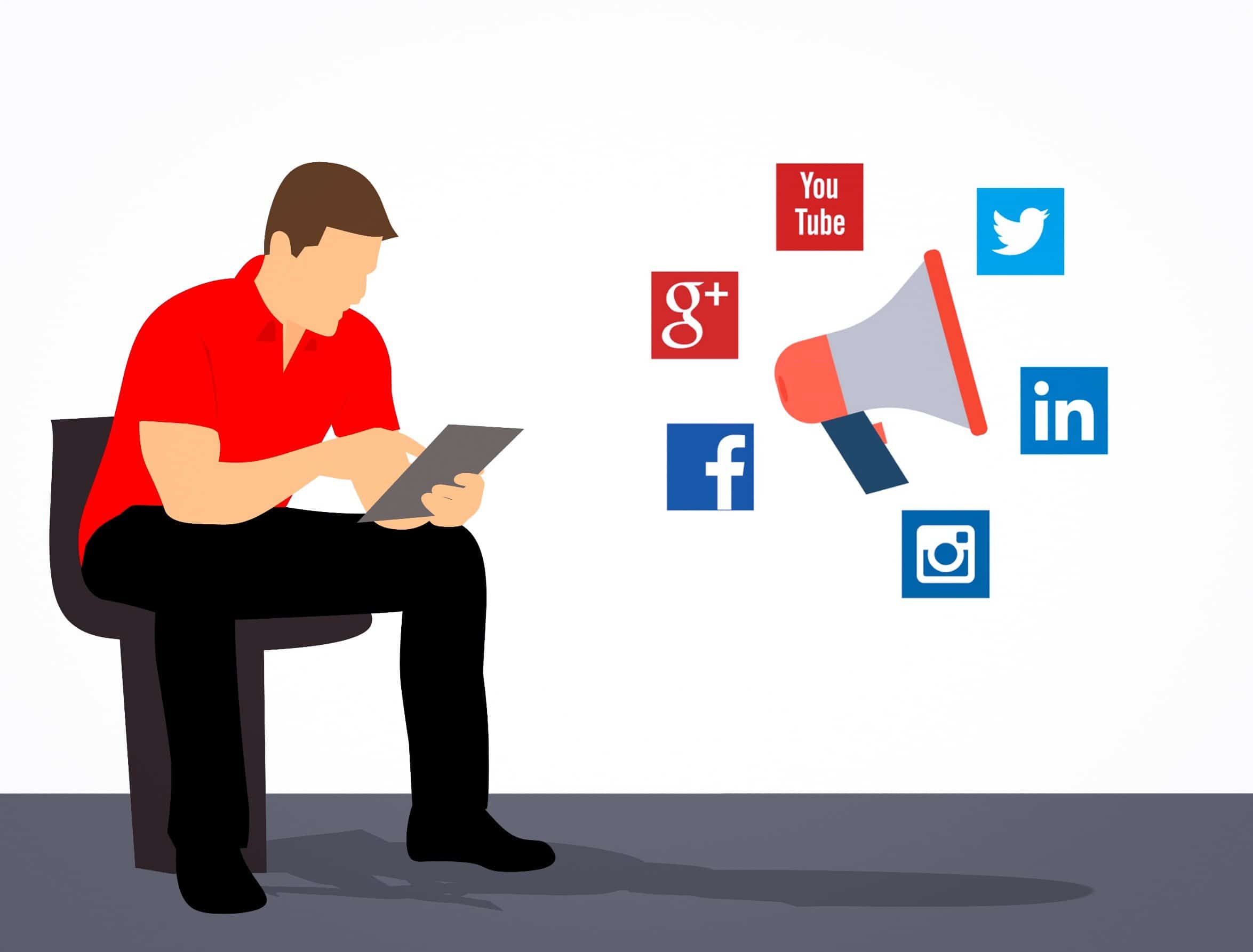With the right strategy in place, doctors have the most to gain by properly using social media to market their practice, share their years of experience and chime in on discussions with colleagues in the industry.
Many doctors are afraid of the unknown and choose to remain silent across social media due to liability and privacy concerns. It is possible to strike a good balance of transparent communication, while conforming to the necessary limitations of the industry.
Today, 24% of doctors use social media at least once a day to post or seek medical information according to Allied Health World.
The use of social media by doctors is still in its infancy, which presents a huge opportunity to take advantage of these digital platforms and build scalable credibility for your career as a doctor. The medical industry is far less saturated online as other industries, due to the many legal restrictions and fears most health care professionals and organizations have since they wish to avoid liability issues associated with social media and other digital platforms.
As a doctor it is entirely possible to create an effective, scalable and profitable social media strategy to market your career and practice. It will take time, effort and a lot of hustle, but the results could have far reaching effects for your long-term success online.
If you’re a doctor, here are ten ways to stand out amongst the chatter and effectively reach the right people in your extended network on social media:
1. Setup a Personal Twitter, LinkedIn and Facebook Account
This seems like a no brainer, but it is an important first step for building a presence online. Fill out each section of your profile on these three networks to optimize them to the fullest.
Start with these three platforms in the beginning and then expand to use others in the future. Focusing your efforts at first is an important way to ensure you’re gaining momentum from the time spent using social media.
Begin with Facebook, Twitter and LinkedIn today to start filling out your profiles and sharing content with your network.
2. Use Visuals When Sharing Content
Visuals resonate more with people than just text, therefore incorporate more images with your social updates on LinkedIn, Twitter and Facebook. This is the most important to implement on Facebook, followed by Twitter and then LinkedIn.
When sharing content, use original content, free stock footage or non-copyrighted photography to boost how engaging your posts are. Another option is to use the photos used in the blog post, article or video you’re posting about on these networks.
3. Teach Others, Share the Knowledge
No matter what platform you’re sharing content on, be sure that what you’re saying to connections, friends and followers is educational and actionable. Pull from your unique expertise and share timely and relevant information about what you know best.
In addition to joining existing Twitter chats, LinkedIn groups and other relevant discussions online about your expertise and industry, start your own knowledge-sharing hub on social media to bring a new perspective and depth of knowledge to your professional interests.
Whether this “knowledge hub” is a Facebook Group, LinkedIn group, Twitter chat or some other form of niche community, it is an important method of sharing what you know and building your credibility as you educate others.
As a doctor it is important to follow this rule of thumb to ensure that you’re providing the most value to others and making use of your time spent using social networks. A doctor’s job is to share their expertise and help execute their advice. Social media merely helps to scale the spread of knowledge between physicians, their patients and the larger medical community.
4. Post Frequently on LinkedIn
As the largest network of professionals online, LinkedIn’s profiles allow a doctor to highlight each aspect of their career path with text and visuals. LinkedIn has the most benefits to offer doctors due to its professional nature and vast network of like-minded experts interested in connecting with others. Begin by making the most of your profile by sharing content from your account that reflects your expertise and interests as a healthcare professional.
Content shared on LinkedIn should be of a professional nature and a little more reserved than content typically shared on Twitter or Facebook. Share links to articles and other relevant information that could be of value to your connections, while making sure to add your own perspective to each piece of content by adding a comment to the post.
5. Follow Other Doctors on Twitter, LinkedIn & Facebook
Start by reaching out to your existing network of contacts that you already know by searching for colleagues, friends and peers in the medical field on all three networks. Follow, connect and friend these individuals to foster a following that you can continue to build from.
Now start searching using each network’s search feature for individuals in a similar role, industry or expertise. By building a large network on each platform you’ll have other like-minded people to interact with, rely on for support and an active feed on engaging information to read, share and discuss.
6. Participate in Existing Conversations on Twitter
Twitter is the best social platform for public one-to-one conversations at scale. Start discussions with other doctors and medical professionals to address current trends, recent industry news or interesting findings or studies.
Find these conversations from other’s you’ve followed in your field or by searching Twitter hashtags or keywords related to your interests or focus as a physician. Twitter users often communicate in a more conversational tone when speaking with others, which allows a doctor to better incorporate their personality and build the trust of others in their extended network.
7. Join Relevant Twitter Chats
Twitter chats are weekly, monthly or quarterly conversations centered on a particular topic and hashtag. Discover what Twitter chats are available for doctors and medical professionals, then join in on theses conversations with other chat participants, to learn something new and share your expertise.
Some health care related Twitter chats are #FOAMed, #abcDrBchat, #hcsm, #MDChat and #SocPharm. For a full list of every active Twitter chat there is, check here.
When participating in a Twitter chat, answer some of the questions posed by the moderator by adding your opinion and insights to the larger discussions. Follow the moderator and other participants in the chat, while making sure to consistently include the appropriate hashtag in all of your tweets about the chat.
8. Join LinkedIn Groups That Match Your Expertise
Search for groups using LinkedIn’s search feature or browse what groups your connections are a part of to find communities that match your expertise and interests as a professional.
Groups on LinkedIn offer a unique opportunity for similar professionals to discuss, post and share content about a particular subject. Some of the most popular LinkedIn groups for physicians on LinkedIn are: American Medical Association, Medical Doctor (MD) Network, Medical Group Management Association (MGMA), Physicians Practice and the America’s Leading Practice Management Resource.
Once you have become a member of a few relevant groups on LinkedIn, search through the existing discussions, learn what other group members are talking about, post engaging content for the group to discuss and connect with other group members. LinkedIn groups are only as valuable as the time and effort you put in to them.
9. Strive For Accuracy
There is a high amount of misinformation online when it comes to the medical field, confusing consumers and diluting the effectiveness of accurate medical insights found online.
As a doctor, it is important to act as a voice of reason when sharing information about health care online. Strive for accurate coverage and discussion when it comes to the information you decide to share on social media. Avoid interacting with illegitimate accounts and connections on social media that could affect your credibility for the long-term.
Limit the time spent on social media to a certain part of the day or a few times a week to help focus your efforts to be more accurate. Again, it should always be quality over quantity when it comes to the content being shared and the discussions you are having online.
10. Ask Questions
One of the most beneficial aspects of social media is the ability to have actual conversations online with peers, friends, family and other connections in your network. As a doctor it is also important to ask questions of your audience to get their feedback on a decision or perspective on industry news.
By asking questions you’re able to learn from the collective insights of your network and help share your human side. No one person knows everything, but everyone has something to share with others. Poll your network on social media to gain new insights and further establish your credibility as a well-respected doctor.
Are you a medical professional using social media to build a network and gain credibility in your field? What tips or tricks have worked to jumpstart your social media marketing efforts? Please share your insights in the comments below.
Images courtesy of Maz, Kyee, James Graves and Román Jusdado.















